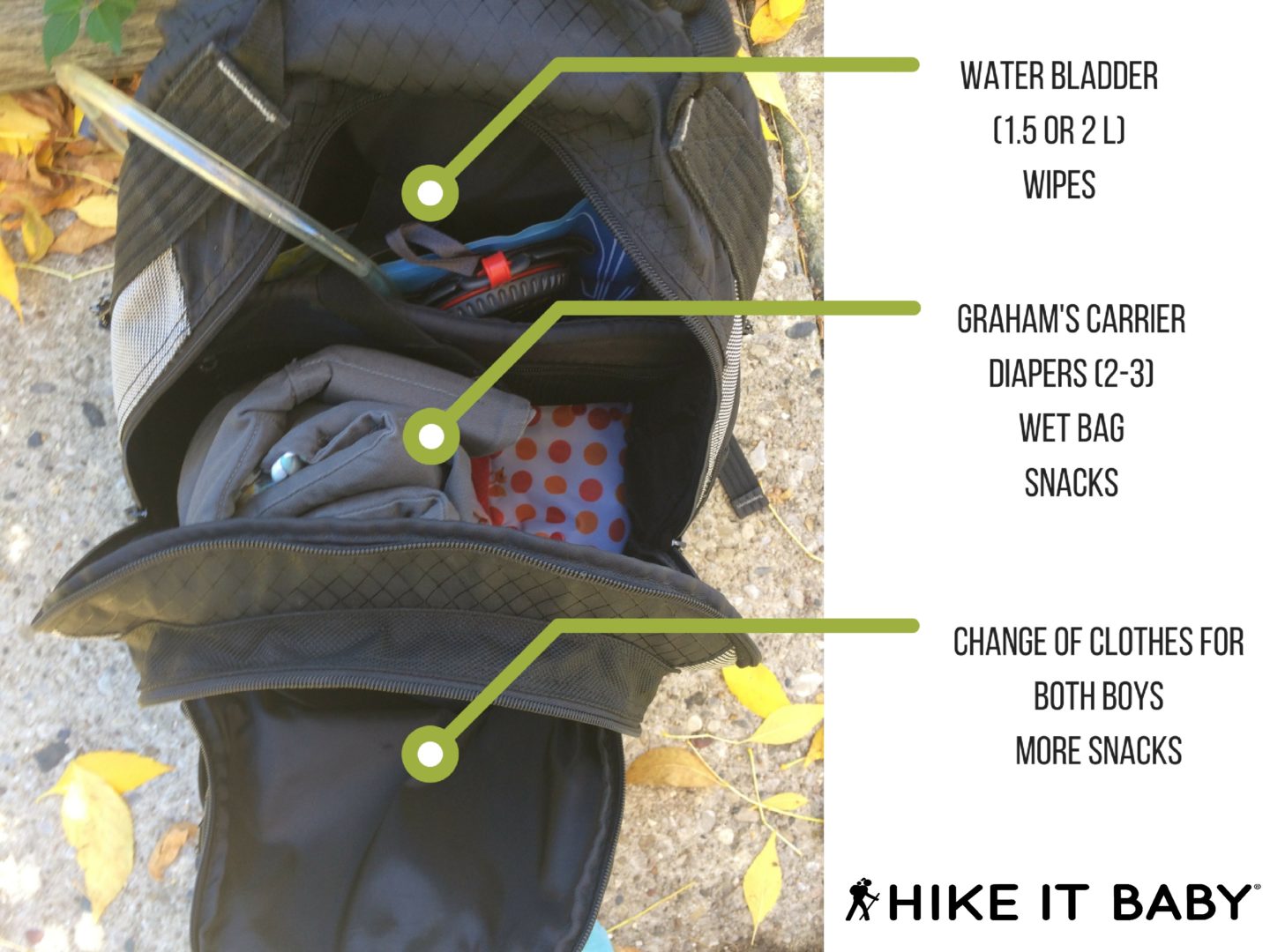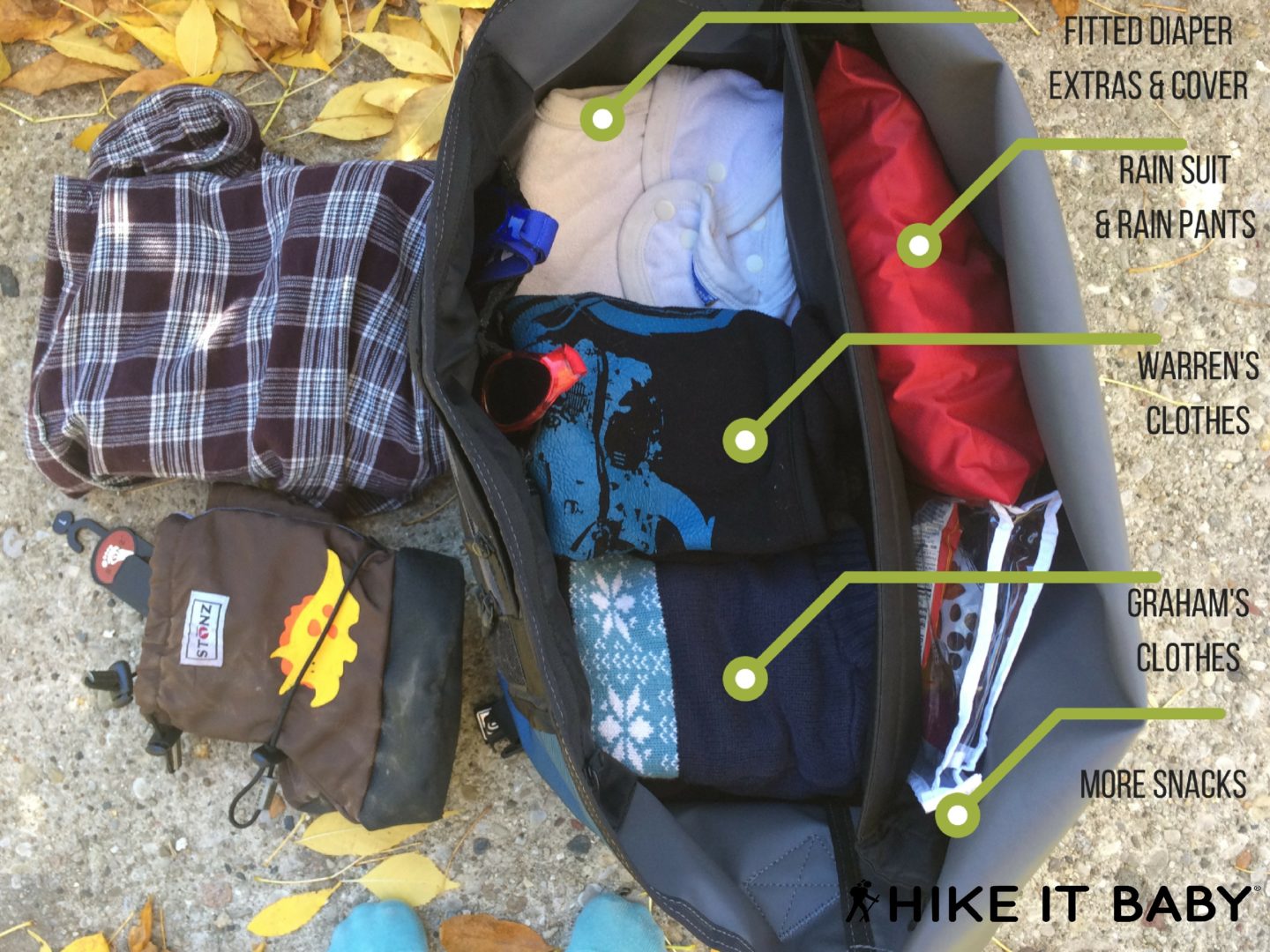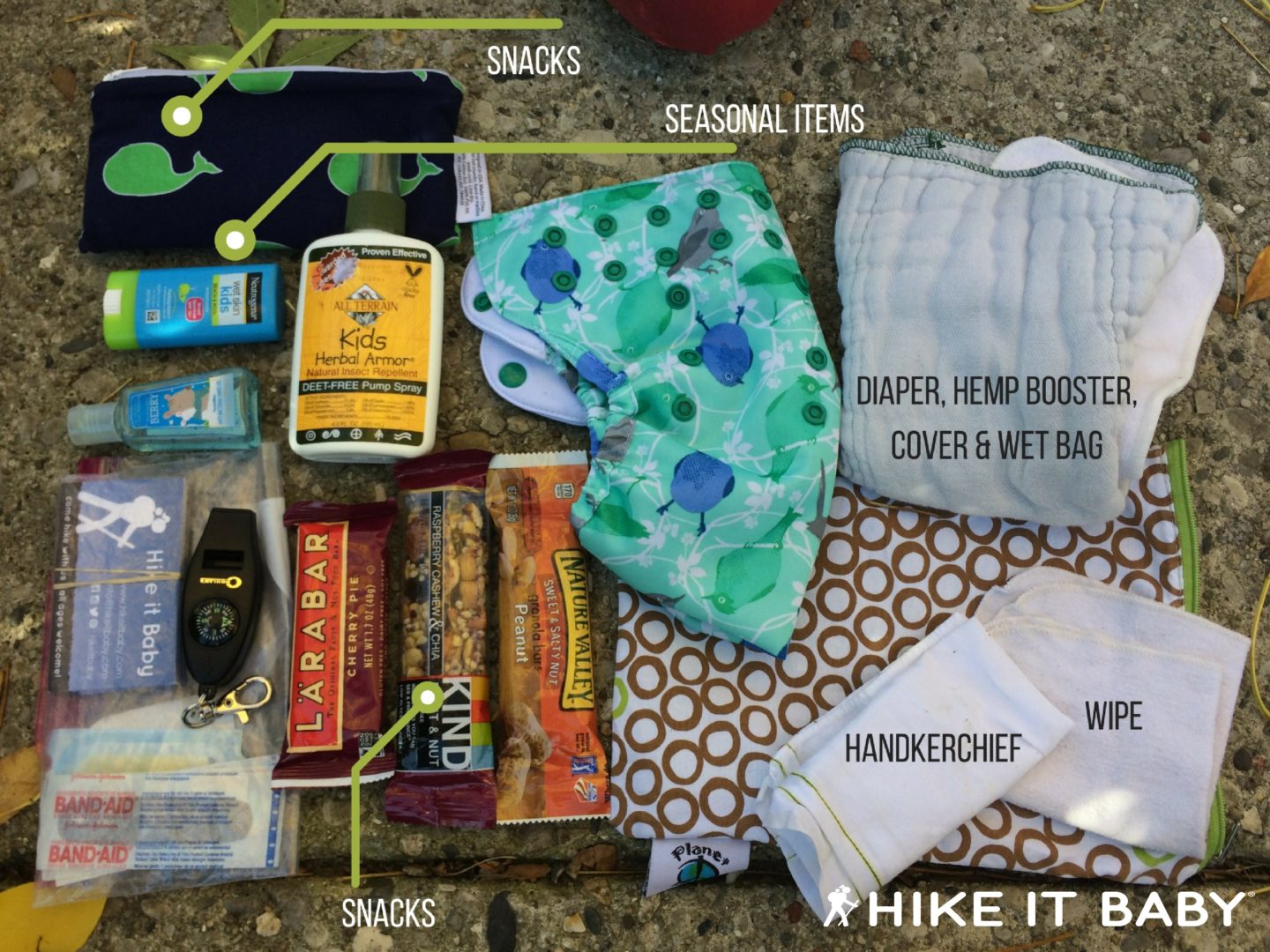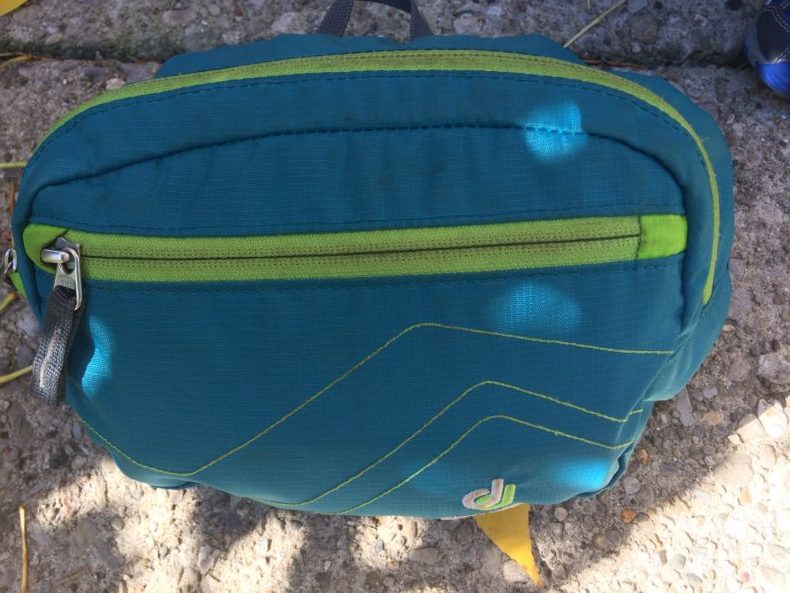That's Too Heavy!
Do a Google search for hiking blogs and websites and I can practically guarantee that you'll soon come across discussions about weight. If you were an ultralight backpacker prior to having children, you might be feeling a bit heavy these days. Certainly, having children along on a hike changes the way we prepare. However, I really want to encourage you to not completely overload yourself.
 It's okay if you laughed a little. I laughed too, as I recreated this photo. It's easy to overpack when you have children. After all, we are supposed to be prepared for any emergency. I'm positive that the bag weighed more than the baby. I recently loaded this bag up on a 3-mile toddler led. After the end of the hike, when I saw how little I had actually used, I forced myself to critically evaluate what I'm carrying on my hikes.
I need to occasionally tandem; the kids' combined weight is 60 lbs, so any extra weight really needs to be slimmed down.
It's okay if you laughed a little. I laughed too, as I recreated this photo. It's easy to overpack when you have children. After all, we are supposed to be prepared for any emergency. I'm positive that the bag weighed more than the baby. I recently loaded this bag up on a 3-mile toddler led. After the end of the hike, when I saw how little I had actually used, I forced myself to critically evaluate what I'm carrying on my hikes.
I need to occasionally tandem; the kids' combined weight is 60 lbs, so any extra weight really needs to be slimmed down.


 For water, we have 2 different options: a 2L water backpack or a 1.5L kids pack. I try to have Graham carry the water whenever possible. Graham loves his backpack. When he carries the water, he is more likely to drink the water. Plus, he loves that the water nozzle is magnetic. The fanny pack may not be very stylish, but it allows me to carry Warren in both front and back carries, and tandem, without too much fuss. It also forces me to be economical about the amount of things I have, which reduces excess weight.
This system works for where we are in life. As the boys age, I hope to have them carry more of their own gear. We will go through toilet training with Warren, which will necessitate a temporary increase in the amount of clothing I bring. My goal, for future situations, is to only bring what I need. We haven't graduated to longer hikes yet, once we do I'll reevaluate what gear I'm carrying–and how much it weighs.
For water, we have 2 different options: a 2L water backpack or a 1.5L kids pack. I try to have Graham carry the water whenever possible. Graham loves his backpack. When he carries the water, he is more likely to drink the water. Plus, he loves that the water nozzle is magnetic. The fanny pack may not be very stylish, but it allows me to carry Warren in both front and back carries, and tandem, without too much fuss. It also forces me to be economical about the amount of things I have, which reduces excess weight.
This system works for where we are in life. As the boys age, I hope to have them carry more of their own gear. We will go through toilet training with Warren, which will necessitate a temporary increase in the amount of clothing I bring. My goal, for future situations, is to only bring what I need. We haven't graduated to longer hikes yet, once we do I'll reevaluate what gear I'm carrying–and how much it weighs.
If you are anything like me, you'll appreciate what I had in my bag that first time out.
The hike setting: toddler led, 1 mile, at no point would we be more than 10 minutes from the car, 2 kids (ages 2 months and 2.5 on our first hike.) It's okay if you laughed a little. I laughed too, as I recreated this photo. It's easy to overpack when you have children. After all, we are supposed to be prepared for any emergency. I'm positive that the bag weighed more than the baby. I recently loaded this bag up on a 3-mile toddler led. After the end of the hike, when I saw how little I had actually used, I forced myself to critically evaluate what I'm carrying on my hikes.
I need to occasionally tandem; the kids' combined weight is 60 lbs, so any extra weight really needs to be slimmed down.
It's okay if you laughed a little. I laughed too, as I recreated this photo. It's easy to overpack when you have children. After all, we are supposed to be prepared for any emergency. I'm positive that the bag weighed more than the baby. I recently loaded this bag up on a 3-mile toddler led. After the end of the hike, when I saw how little I had actually used, I forced myself to critically evaluate what I'm carrying on my hikes.
I need to occasionally tandem; the kids' combined weight is 60 lbs, so any extra weight really needs to be slimmed down.
I adopted a system where most of our gear and back up items live in my car. This works well for us for a couple of reasons.
- We have this giant messenger bag that I can really overload with whatever gear, sunscreen, bug repellent, or base layer I think we'll need.
- I don't ever worry about the weight of this bag since I only ever carry it back into the house to restock.
- It allows me to be seasonally flexible and accommodate life events like toilet training (I had about 5 pairs of pants for Graham during those days.)

The biggest benefit is that currently I only carry the following...

The magic trick is getting it all to fit into this bag...
 For water, we have 2 different options: a 2L water backpack or a 1.5L kids pack. I try to have Graham carry the water whenever possible. Graham loves his backpack. When he carries the water, he is more likely to drink the water. Plus, he loves that the water nozzle is magnetic. The fanny pack may not be very stylish, but it allows me to carry Warren in both front and back carries, and tandem, without too much fuss. It also forces me to be economical about the amount of things I have, which reduces excess weight.
This system works for where we are in life. As the boys age, I hope to have them carry more of their own gear. We will go through toilet training with Warren, which will necessitate a temporary increase in the amount of clothing I bring. My goal, for future situations, is to only bring what I need. We haven't graduated to longer hikes yet, once we do I'll reevaluate what gear I'm carrying–and how much it weighs.
For water, we have 2 different options: a 2L water backpack or a 1.5L kids pack. I try to have Graham carry the water whenever possible. Graham loves his backpack. When he carries the water, he is more likely to drink the water. Plus, he loves that the water nozzle is magnetic. The fanny pack may not be very stylish, but it allows me to carry Warren in both front and back carries, and tandem, without too much fuss. It also forces me to be economical about the amount of things I have, which reduces excess weight.
This system works for where we are in life. As the boys age, I hope to have them carry more of their own gear. We will go through toilet training with Warren, which will necessitate a temporary increase in the amount of clothing I bring. My goal, for future situations, is to only bring what I need. We haven't graduated to longer hikes yet, once we do I'll reevaluate what gear I'm carrying–and how much it weighs.
Related Content




Comments